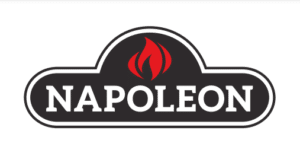There are numerous areas in which we can make better efforts to be environmentally friendly, and the modern fireplace is one such area. At Comfort Solutions, we’re proud to offer numerous modern fireplace options that allow you to operate in a green way, and our experts are here to help you operate your fireplace in a way that doesn’t strain the earth.
Regardless of which kind of fireplace you have, there are a few things you can do to lower your general impact on the local environment. Here are a few basic tips.
Closed Fires
In many modern building codes, open fires will not be permitted. In many historic homes, however, it can be tough to say goodbye to this traditional kitchen hearth style.
It’s best for both your home and the planet, however, if you convert your open fire into a closed one using pellets, firewood or gas. An open fire burns more fuel, and also burns wood in an inefficient way – a double-negative. A closed fire, on the other hand, burns very efficiently and requires less fuel to keep ablaze.
Proper Sizing
A fireplace insert or stove that is too small will eat far too much fuel as you try to heat the home. On the flip side, a stove that’s too large will waste more fuel than you need for the home. Our specialists can recommend the proper sizing to you as necessary.
Fuel Type
The kind of fuel you use in your fireplace depends on your local economy and pollution levels. A few options include:
- Wood in a wood stove provide great heat for a home, but also causes smoke production. In a rural area with low pollution, this might be okay – wood is also electricity-free. It’s also carbon neutral, which means it doesn’t help the environment but doesn’t hurt it either.
- Pellets: In a more urban area where pollution is an issue, consider a fuel that produces fewer emissions to help local air quality. Pellet stoves have high BTU outputs but low emissions, a good middle ground for those who prefer a wood-style fire. Pellet stoves do require electricity and do release carbon dioxide into the air, but the energy consumption here is relatively low.
- Gas inserts: If your main goal is ambiance and a great atmosphere, natural gas or propane inserts are the way to go. These both burn cleanly, and have incredibly low levels of fossil fuel emissions. However, they are also not renewably sourced – if you choose this option, do your best to support fuel companies that try to reduce their footprint.
For more on being environmentally friendly with your fireplace, or to find out about any of our fireplace services, speak to the experts at Comfort Solutions today.


